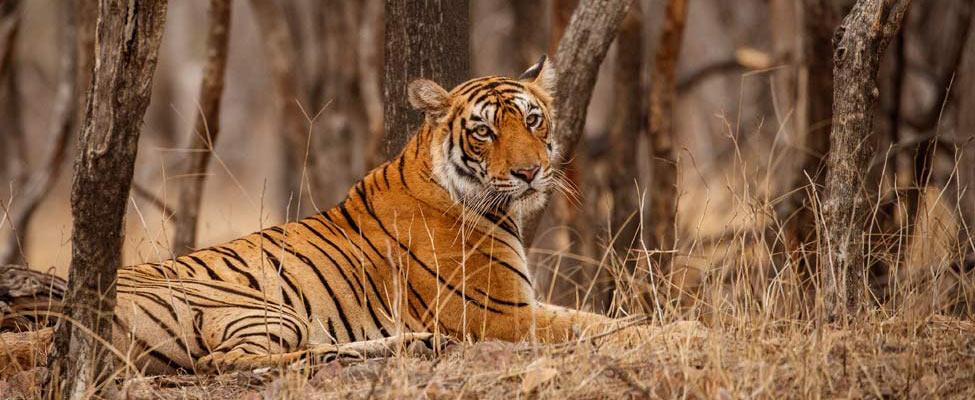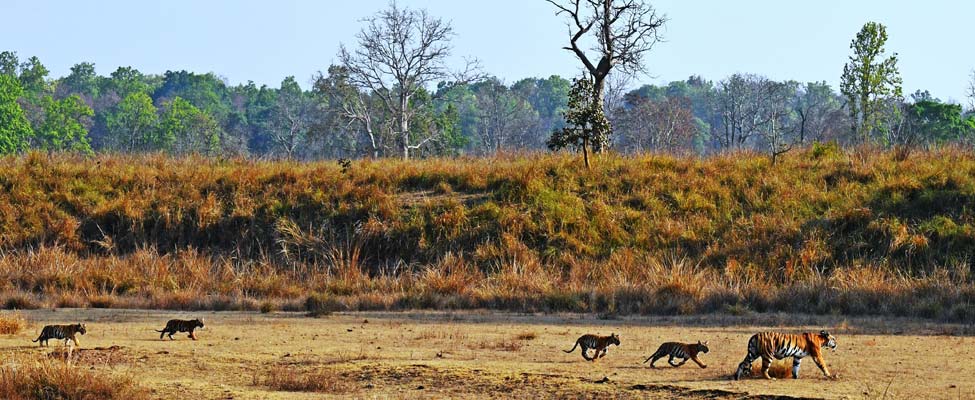Regarded as the supreme predator on earth, the tiger has awed us all tremendously with his majesty, strength and agility. Aptly described as the “spirit of the Indian jungle”, the super cat has evolved into a physically powerful and strong carnivore over thousands of years, and once commanded an extensive distribution in the world. High adaptability has helped the animal survive a wide temperature range, varied climates and topographies and diverse forest and habitat types. Magnificence and ferocity, nonchalance and stealth— the tiger displays a mix of all these attributes and emotions almost simultaneously.
Now tigers are precariously restricted to 13 tiger range-countries, numbering only around 3900, and India still supports 57 per cent of the world population. It is heartening that despite such a wide range of problems so typical of a developing country, we are taking lead in conservation. Having been dedicatedly conserved for around 50 years against a wide range of threats including population pressure, poaching, and habitat loss, the tiger now rightly lives in the hearts of millions of Indians.
So far, we have lost around 75 tigers in this calendar year alone, and this figure also includes those deaths by natural causes. Needless to say, each tiger death, specially in a protected area, unfailingly makes headlines in the media and is discussed passionately. Understandably, the management of the concerned protected area has to go on back foot and receive a lot of flak from all quarters. While tiger poaching cannot be ruled out even in the best of wildlife protected areas, the public never acknowledges that tigers, being mortals, may also die naturally due to sickness or grave injuries sustained in infighting. Park managers often have very hard time explaining about the "naturalness" of such deaths, and there is hardly any taker.
In spite of such strength and agility, the lives of tigers are not easy in the wild. Unlike in captivity where a tiger may survive up to 15 years, or even beyond, under excellent veterinary care, the average life span of a wild tiger generally does not go beyond 10 years. Though not common in India, tigers have also been reported to die of canine distemper and rabies—both viral diseases.
Generally regarded as solitary animals, tigers also show instances of sociability with tigresses and cubs sired by them. We can also draw an analogy to understand their social lives. Like the human society where we are bound together through persistent interactions, interests, status, roles and networking, a tiger population also has to survive under a complex social organisation. Tiger movements and its interactions more or less fit into a range-territory concept. Guided by evolutionary tendencies to make most of natural resources for survival and procreation against the rivals, tigers roam about a large area known as a home range. A territory, however, is a smaller area within a home range, and is aggressively defended against rival-tigers and intruders. Generally, the territories of adult male tigers, if they are not siblings, are non-overlapping. The territory of an adult tiger, however, overlaps with three to five adult tigresses, which show philopatry—staying close to their birth place. These territorial resident tigers are usually not less than four or five years old, and have already undergone the transient or floater phase after separating from their mothers and reaching the age of about two years. In this backdrop of social organisation, there exists a land tenure system whereby older and weaker tigers are gradually squeezed out by younger and more powerful ones so that they in turn may establish their territories and mate with tigresses. Now this whole systemic and tenurial complex gives rise to tiger infighting in this tiger population.

Tiger infighting could arise out of the following conditions. Firstly, a transient tiger, separated from his mother, a greenhorn, younger and behaviourally too inquisitive and explorative and relatively unskilled gets into fights with either another transient or a powerful resident tiger and gets killed, sometimes after fierce fighting. Secondly, two resident tigers may fight for territory or over a female and the weaker may get killed on the spot or be injured seriously to die later of his wounds. However, sometime sibling resident tigers are known to tolerate each other’s presence. Thirdly, a resident tiger may kill all the cubs of a tigress, not sired by him, so that he may mate with the mother tigress to produce his own progeny. In most cases, such tigresses do mate with these tigers and produce cubs. No tigress with cubs will come into estrous and mate with a tiger. Sometimes, however, it is also seen that mother tigresses falsely court advancing tigers to divert their attention from her cubs. Infanticide has become a well-known behaviour in a high density tiger population. Generally, however, a tiger does not kill his own cubs, and is also at times seen socially involved with the tigress and cubs. Lastly, a tiger may also kill one or all the small cubs of a tigress that he perceives as rivals or a future threat to his domain. Such killings may or may not be followed by mating after some time. This type of infanticide is characterised more by instantaneous aggression and dominance than sexual proclivity.
Unfortunately, I have seen several tiger deaths at the Kanha tiger reserve after infighting. If the dead animal happened to be an adult male or female, it generally died of a punctured jugular vein, tracheal rupture, or septicemic wounds in the face or the head that could not be healed by licking. If it was a cub, the causes of death usually were ruptured skulls and/or severed necks with deep canine holes. Associated injuries included broken shoulders, deep claw marks in the face and lacerated wounds in the abdomen.
Tigers are also known to grow old naturally, and die of serious infections. Small cubs have a wide range of enemies in a protected area, including leopards, wild dogs, jackals and even snakes. Sometimes cubs also succumb to their own congenital sickness. In this way, a few tigers of different ages may die every year in a high tiger density area of the protected area. Nothing can be done about this, and evolutionary intricacies and genetics have strong bearings on this phenomenon.
As tigers are closely monitored through camera-trapping almost throughout the year at Kanha, most tigers and their relationships within the social organisation are known to the Kanha management. At times even the management cannot predict fierce infighting between two individuals.
(The writer is a research officer at Kanha Tiger Reserve, Madhya Pradesh)






